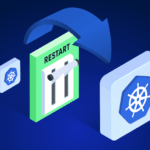
AWS EC2 Instance Types: Choosing Based on Workload

Product Marketing Team Lead
In the realm of cloud computing, Amazon Web Services (AWS) has emerged as a leading provider, offering a wide range of services to cater to various business needs. One of the core components of AWS is the Elastic Compute Cloud (EC2), which enables users to launch and manage virtual servers called instances.
Understanding the different AWS EC2 instance types is crucial for optimizing performance, scalability, and cost-efficiency. This article will delve into the professional background of AWS instance types, discuss the most commonly used types, offer tips for selecting the right instances based on specific requirements, and shed light on pricing considerations.
AWS EC2 Instance Types
AWS EC2 instance types are designed to cater to diverse workloads, ranging from general-purpose applications to high-performance computing and machine learning.
Each instance type offers a unique combination of:
- CPU
- Memory
- Storage
- networking capacity
AWS provides a comprehensive portfolio of instance families, including the general-purpose T3, compute-optimized C5, memory-optimized R5, and GPU-accelerated P3, among others. These instance families are further divided into different generations and sizes, allowing users to find the best fit for their applications.
Most Used AWS EC2 Instance Types
Among the myriad of AWS EC2 instance types, a few stand out as the most common:
General-Purpose: T3 Instances:
T3 instances provide a balance of compute, memory, and network resources, making them ideal for a wide range of workloads. They are well-suited for web servers, development environments, small databases, and other applications with moderate CPU usage.
Compute-Optimized: C5 Instances:
C5 instances are designed to deliver high-performance compute capabilities, making them suitable for CPU-intensive workloads. With the latest generation, C5 instances offer improved networking performance and support for advanced technologies like Elastic Fabric Adapter (EFA), which enables low-latency and high-bandwidth communication between instances.
How to Choose the Right Instance Type
When selecting the appropriate AWS EC2 instance type, several factors should be taken into consideration.
Workload Requirements:
Understand the specific needs of your workload, including CPU, memory, storage, and network requirements. This will help you narrow down the available instance types and select the one that best matches your workload’s demands.
Performance Optimization:
Consider the performance characteristics of the instance types. For compute-intensive workloads, choose compute-optimized instances, while memory-intensive applications benefit from memory-optimized instances. AWS provides detailed documentation on the performance specifications of each instance type, enabling you to make an informed decision.
Cost Optimization:
To optimize costs, it is essential to evaluate the pricing models and strategies offered by AWS. AWS offers various pricing options, such as On-Demand, Reserved Instances, and Spot Instances. Understanding AWS pricing models and utilizing the most suitable one for your workload can result in significant cost savings.
Pricing Considerations
Pricing is a crucial aspect to consider when choosing AWS EC2 instance types.
While On-Demand Instances provide flexibility and convenience, they may not be the most cost-effective option for long-term usage.
AWS offers Reserved Instances (RIs), allowing users to reserve capacity for a specified duration and receive significant cost savings.
Additionally, Spot Instances enable users to bid for unused capacity, offering substantial discounts but with the risk of potential termination. Carefully assessing workload requirements and utilization patterns will help determine the most cost-efficient pricing strategy.
Conclusion
Selecting the right AWS EC2 instance type is essential for optimizing performance, scalability, and cost efficiency. Understanding the professional background of AWS instance types, exploring the most commonly used types, and considering workload requirements and performance characteristics are vital steps in making informed decisions.
Evaluating pricing models and strategies is also crucial to achieving cost optimization. AWS offers a wide range of resources and documentation to assist users in making the most suitable choices for their workloads. By leveraging the power of AWS EC2 instance types effectively, businesses can maximize their cloud computing capabilities and achieve their desired outcomes.
Related Articles
-
How daily Micro-SPs redefine cloud savings
October 27, 2025 -
 Zesty now supports In-Place Pod Resizing for Seamless, Real-Time Vertical Scaling
Zesty now supports In-Place Pod Resizing for Seamless, Real-Time Vertical Scaling
July 30, 2025 -
 Kubernetes Updates – June
Kubernetes Updates – June
July 16, 2025 -
 The endless cycle of manual K8s cost optimization is costing you
The endless cycle of manual K8s cost optimization is costing you
July 2, 2025 -
 Kubernetes Updates – April 2025
Kubernetes Updates – April 2025
May 21, 2025



